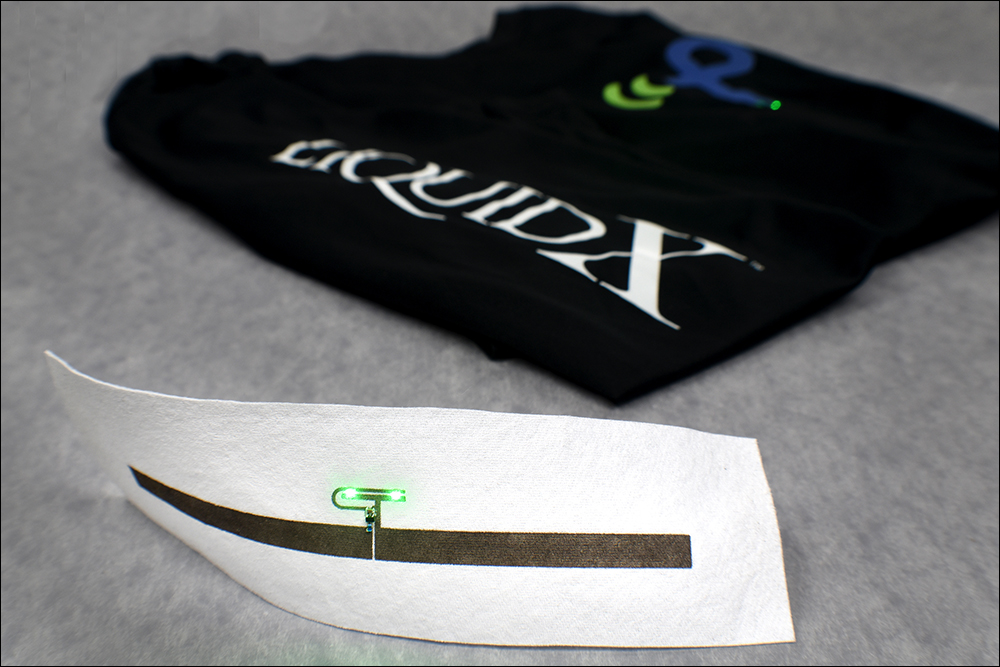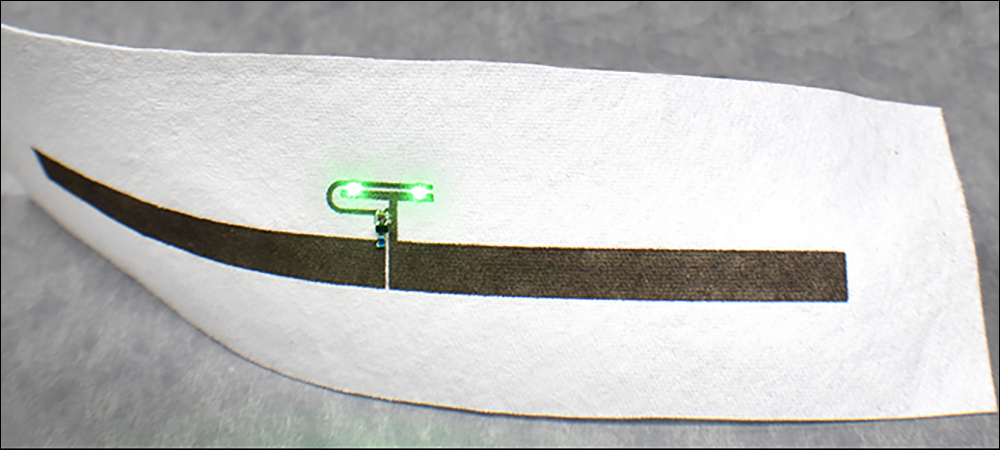Powercast, a provider of radio frequency (RF)-based long-range over-the-air wireless power technologies has partnered with LiquidX, a manufacturer of functional metallic inks with prototype-to-production design and manufacturing capabilities. The two companies have announced a printed electronics venture to enable garment manufacturers to integrate wireless power functionality into durable, flexible and washable e-textiles.
Utilizing Liquid X’s proprietary ink technology, manufacturers can print circuitry directly onto a garment, add Powercast’s wireless power technology and a battery, and seal the electronics into the garment during the manufacturing process. The companies’ goal is to enable the cost-effective manufacturing of durable e-textiles, with battery-powered features such as health and wellness, movement monitoring, and LED-based illumination embedded directly into garments. Consumers could then recharge the electronics over the air, as well as wash the garments without having to remove a battery pack.

Powercast, founded in 2003, provides wireless technologies that work in the far field at a distance of up to 80 feet to provide power-over-distance, as well as eliminate or reduce the need for batteries, and power or charge devices without the need for wires and connectors. Its IP portfolio includes 57 patents worldwide (32 in the United States), with 29 patents pending. LiquidX partners with manufacturers in the electronics industry to develop and print functional components utilized in various devices, including sensors, heating elements, smart textiles and more.
According to the two companies, smart garment makers often snap electronics onto a garment, along with battery packs that users must then detach before washing. With their combined technologies, however, LiquidX and Powercast report that manufacturers can now integrate electronics directly into garments. Circuitry is first printed onto fabric using LiquidX’s proprietary particle-free ink, including Powercast’s RF wireless receiving antenna. Next, Powercast’s Powerharvester RF wireless power receiver chip, a battery and other components are mounted onto the printed traces, after which an encapsulant provides a high-strength, waterproof bond to seal in the electronics.
To recharge the battery, consumers can place a Powercast RF transmitter in the closet or drawer where they store their smart wearables. The device will transmit RF energy over the air to the RF receiver embedded in the wearable, which will then convert that energy to direct current in order to charge the battery. In January of this year, the two Pittsburgh-based companies showcased a wirelessly rechargeable smart athletic shirt prototype that illuminates using printed electronics, embedded power harvesting technology and LEDs powered over the air up to 10 feet away from the wireless transmitter.


